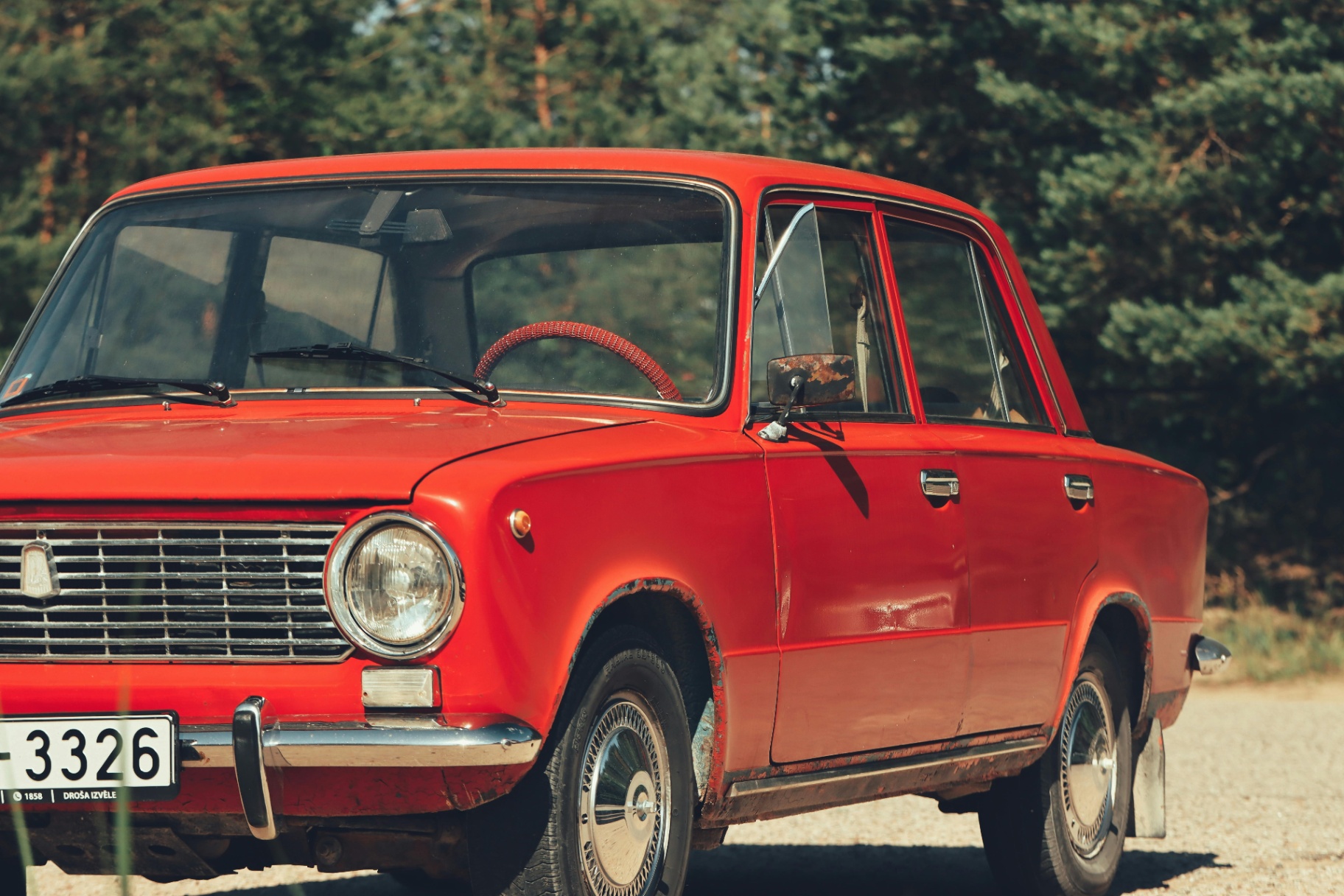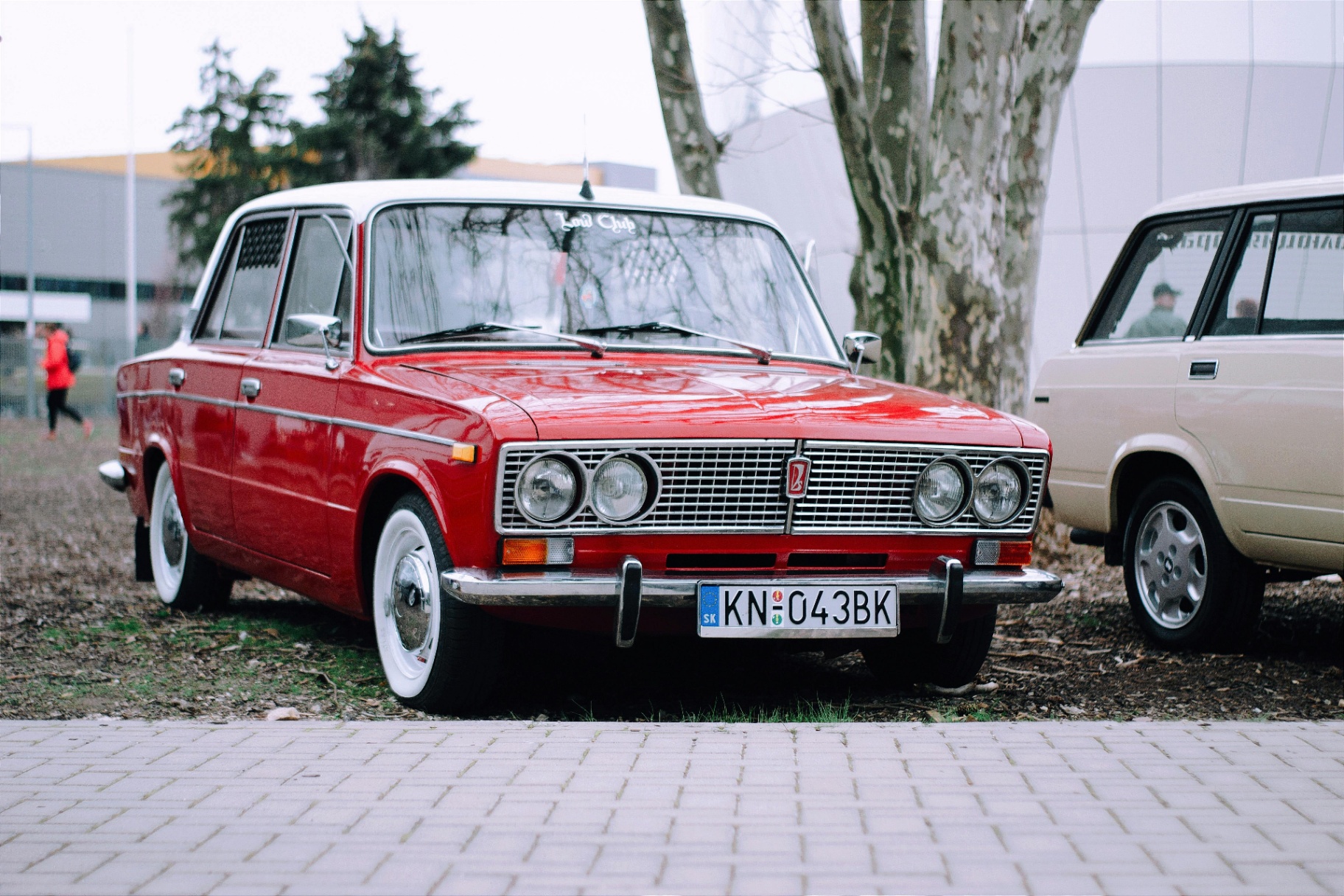
Born as a state project to provide affordable and durable vehicles, Lada quickly became the car of the Soviet people. But what makes its story even more fascinating is its ability to adapt. Despite the economic and political challenges that came with the fall of the USSR, Lada has endured, transforming into a symbol of resilience that remains relevant today.
A symbol of the Soviet Union
As the most representative automobile of the Soviet Union, Lada became an essential part of daily life for millions. It was not only a reliable and affordable mode of transportation but also stood as a symbol of Soviet identity. Its robust design and ability to withstand the harsh climatic and infrastructural conditions of the vast Soviet territory made it indispensable. Moreover, its mass production and affordable pricing allowed virtually every Soviet family to own one, solidifying its presence in people's daily lives. Its significance lies not only in its function as a means of transport but also in its symbolism as an emblem of resilience and self-sufficiency, reflecting the values of a nation that prided itself on its ability to be self-reliant and withstand adversity.
Over the years, Lada has demonstrated a remarkable ability to adapt, remaining relevant despite the numerous political and economic changes that have shaken the region. From the Soviet era to the fall of the communist bloc and the transition to a market economy, Lada has managed to reinvent itself and evolve. Its history is a testament to resilience and the ability to face adversity, showing how a brand can endure and thrive through times of uncertainty and transformation. Lada's ability to adapt to new technologies, market demands, and consumer expectations has been crucial to its continued survival and success.
Check this out: Are Russian cars a scam or a hidden gem?

The Beginnings of Lada: A Soviet State Project
Lada's origins can be traced back to the 1960s when the Soviet government embarked on an ambitious project to create an affordable and durable car for its people. At the time, the USSR sought to strengthen its automotive industry and provide its citizens with a reliable mode of transportation that could withstand the harsh climatic conditions and often-deficient infrastructure of the country. This plan was realized through a collaboration with the Italian company Fiat, which contributed its expertise and technology in automobile manufacturing. The alliance with Fiat not only facilitated the transfer of technical knowledge but also enabled the construction of a production plant in Togliatti, a city that would become the heart of the Soviet automotive industry.
Check this out: From Italy to the World: The Global Impact of Fiat
From this alliance emerged the first Lada model, the Lada 2101, popularly known as the 'Zhiguli'. Based on the Fiat 124, this car was adapted to meet the specific needs of the Soviet market, including modifications to the suspension and chassis to better handle poor roads and extreme weather conditions. It quickly became a favorite among Soviets, rapidly becoming the most popular car in the entire USSR. Its simple yet robust design, coupled with its affordability, made it accessible to a wide range of the population, from workers to professionals. The Lada 2101 not only became an essential mode of transportation but also a symbol of progress and modernity in a time of great social and economic change.
A Car for Everyone: The Popularity of Lada in the USSR
Lada's affordability and durability made it incredibly popular in the USSR. Practically every Soviet family had a Lada in their garage, and they were ubiquitous in both urban and rural areas. In cities, Ladas were a common sight on the streets, used by workers, professionals, and families for their daily commutes. In rural areas, their rugged design and ability to handle tough terrain made them the preferred vehicle for farmers and residents of remote regions. The ease of maintenance and the availability of spare parts also contributed to their popularity, as owners could make repairs and adjustments without needing sophisticated tools.
Furthermore, Lada became a symbol of progress and self-sufficiency in Soviet propaganda. Its ability to adapt to the diverse needs of a country as vast and varied as the USSR further cemented its place in society. In the media and official speeches, domestic Lada production was extolled as an achievement of Soviet engineering and a testament to the country's ability to meet its own needs without relying on foreign imports. The image of a Lada traversing the vast steppes or braving winter snowstorms was used to inspire a sense of national pride and unity, reinforcing the idea that, despite challenges, the USSR could thrive through its ingenuity and determination.
See also: Can a Russian car beat an American giant? Ford vs. Lada

Lada during the fall of the Soviet bloc: Surviving tough times
The fall of the USSR brought about an economic crisis that severely impacted state-owned industries, including Lada. Factories faced resource shortages, supply chain disruptions, and a drastic decline in domestic demand. However, the brand demonstrated incredible resilience, continuing to produce and sell cars despite growing foreign competition and economic collapse. Lada implemented innovative strategies to stay afloat, such as diversifying its markets and seeking new business partners. Additionally, the company focused on improving production efficiency and reducing costs without compromising the quality of its vehicles.
Despite the challenging times, Lada managed to maintain its market relevance, proving once again its ability to adapt and survive adverse conditions. The brand not only survived but also found ways to thrive, launching new models that captured the attention of both local and international consumers. Lada’s ability to innovate and evolve in the midst of a global economic crisis is a testament to its strength and determination.

From the post-Soviet era to the present: Adaptation and reinvention
Following the collapse of the USSR, Lada faced numerous challenges in a globalized market. The transition from a planned economy to a market economy brought fierce competition from foreign automakers, forcing Lada to adapt rapidly to avoid falling behind. The brand sought to reinvent and modernize itself to remain competitive, which involved not only improvements in the technology and design of its vehicles but also a significant internal restructuring. A crucial step in this process was the partial acquisition of Lada by Renault in the 2000s, a partnership that marked a turning point in the company's history.
This alliance with Renault helped modernize the brand, introducing new technologies and improving the quality of its vehicles. Renault contributed its engineering and manufacturing expertise, enabling Lada to upgrade its assembly lines and adopt international quality standards. Additionally, the collaboration facilitated access to a global distribution and sales network, expanding Lada's reach beyond Russia's borders. Today, Lada boasts a lineup of models that have evolved to remain competitive, including vehicles with advanced safety features, fuel efficiency, and comfort. This evolution demonstrates that resilience remains one of its core characteristics, allowing Lada not only to survive but also to thrive in an increasingly demanding and dynamic automotive market.






